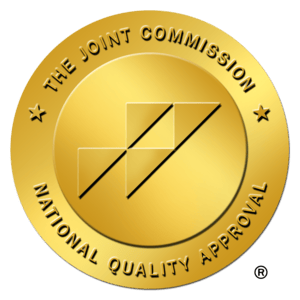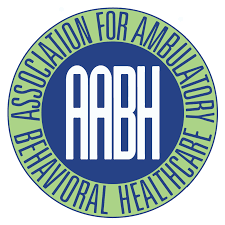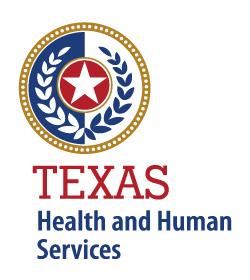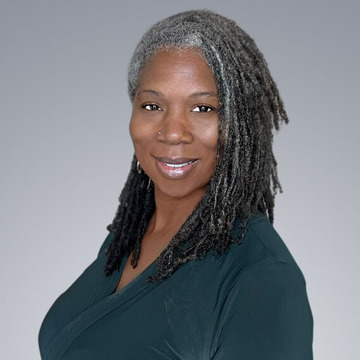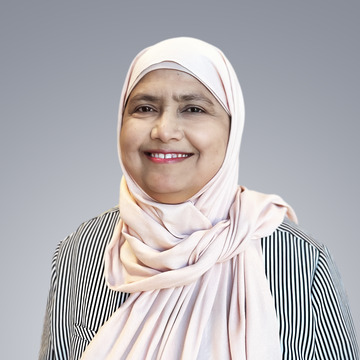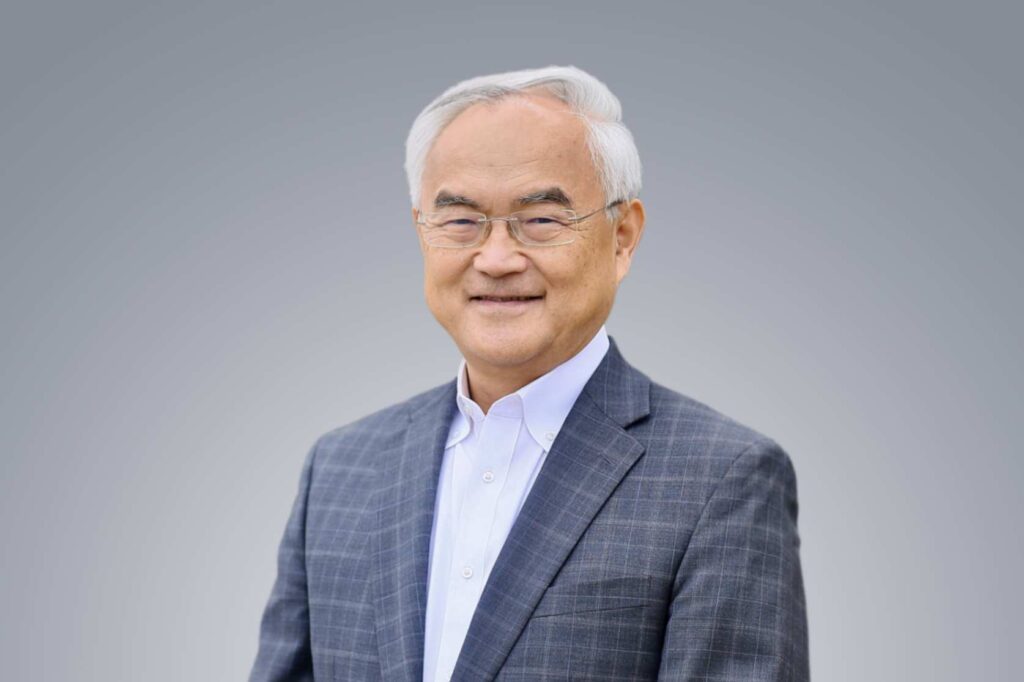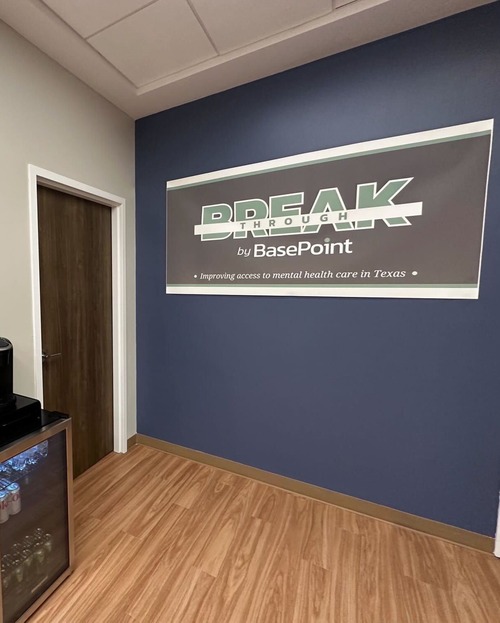Trichotillomania Hair-Pulling Disorder Treatment in Dallas, TX
What Is Trichotillomania Disorder?
BreakThrough by BasePoint Accepts Insurance for Hair Pulling Disorder Treatment in Dallas, TX
Our free assessment with a licensed clinician will provide you with a recommendation for the appropriate level of care for young adults struggling with trichotillomania disorder. We can also check your insurance coverage levels.
Call us today to schedule a same-day assessment at (972) 325-2633 or complete our inquiry form.

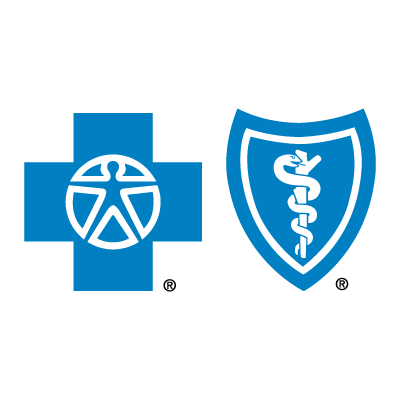

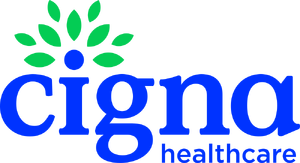
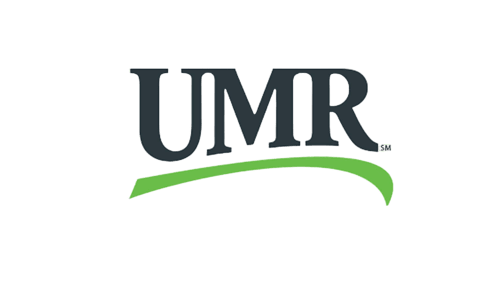

Find Out About Our Young Adult Treatment Admissions Process
Contact Us Form
Signs and Symptoms of Young Adult Hair Pulling Disorder (Trichotillomania)
-
- Recurrent, irresistible urges to pull out hair from the scalp, eyebrows, eyelashes, or other areas.
- Noticeable hair loss, bald patches, or uneven hair growth that may prompt efforts to conceal affected areas.
- Repeated attempts to stop pulling, often accompanied by frustration, guilt, or shame.
- Tension or anxiety before hair pulling, and relief afterward, which reinforces the behavior.
- Preference for specific types of hair, such as coarse or gray strands.
- Ritualistic behavior, such as examining, biting, or playing with pulled hairs.
- Avoidance of social activities due to embarrassment or fear of judgment.
- Emotional distress, including low self-esteem, anxiety, or depression.
- Unconscious pulling, often while reading, studying, or watching TV.
- Continuing the behavior despite consequences, like damaged skin or social isolation.
Trichotillomania is a complex Obsessive Compulsive Disorder (OCD) often linked to anxiety. Although first documented in ancient Greece, modern research highlights genetic and environmental contributors, including findings from twin studies that suggest a heritable component. A 2022 study found that about 1% of the population meets the criteria for trichotillomania, while up to 8% engage in obsessive hair-pulling behaviors.
The condition typically begins between ages 9 and 13, peaking around 12 to 13 years, often triggered by emotional stress, trauma, or family conflict. Though more commonly diagnosed in women, studies dating back to 1994 and current research show that gender-specific treatments are generally ineffective. A 2025 study of over 1,200 individuals found the median age of diagnosis to be 24.6, indicating that many struggle with the condition well into adulthood. In Dallas and beyond, this disorder remains underdiagnosed and undertreated, despite the significant emotional and psychological toll.
Do Mental Health Therapy Programs Provide Treatment for Trichotillomania Disorder?
Yes, mental health treatment often includes specialized trichotillomania treatment, such as habit reversal training, stress reduction, and cognitive behavioral therapy for hair pulling. These evidence-based approaches target physical impulses to pull and the emotional patterns that trigger them. Therapists work with patients to identify stressors, build coping strategies, and replace hair-pulling with healthier behaviors.
Family therapy and support groups may be integrated to address relational dynamics and reinforce progress. At BreakThrough by BasePoint, we tailor a comprehensive treatment plan centered on your unique needs, including medication for OCD when needed. Our compassionate team guides you through habit-reversal protocols and teaches tools to manage urges and emotional distress.
We’ll support you in uncovering the underlying triggers and implementing sustainable coping strategies. With our ongoing encouragement and clinical expertise, you can begin to regain confidence, reduce compulsive behaviors, and move toward lasting emotional well-being.
What Is Dallas Known For?
Dallas is known for its rich blend of history, modern architecture, and vibrant cultural scene. As a major hub in North Texas, it offers a wide range of attractions for locals and visitors alike. History buffs can explore the Sixth Floor Museum at Dealey Plaza, which chronicles the life and legacy of President John F. Kennedy.
Art enthusiasts can enjoy the Dallas Museum of Art or the Nasher Sculpture Center in the downtown Arts District. Families enjoy the Perot Museum of Nature and Science and the Dallas World Aquarium. Outdoors, the Dallas Arboretum and Botanical Garden offers stunning views along White Rock Lake. Nearby, Fort Worth’s Stockyards National Historic District and Sundance Square provide a Western flair just a short drive from downtown Dallas.
Types of Trichotillomania Hair-Pulling Disorder Treatment Programs in Dallas, Texas
Trichotillomania can take a significant toll on your emotional well-being, self-esteem, and daily life. Seeking professional support can help you break the cycle and regain control. While every care plan should be tailored to your needs, the following examples represent common treatment approaches used to address hair-pulling disorder. These are not exhaustive but offer insight into available options.
Inpatient and residential treatment provides 24-hour care in a structured environment, ideal when you have severe trichotillomania or co-occurring conditions. These programs offer intensive trichotillomania therapy, medical support, and monitored routines to help reduce compulsive behaviors. Living on-site removes everyday stressors and creates a focused space for healing, behavioral change, and the development of long-term coping strategies.
Online therapy, also known as teletherapy, offers flexible and accessible treatment for trichotillomania from the comfort of your home. These programs connect you with licensed professionals through secure video therapy sessions, making it easier to maintain regular care. Teletherapy is especially helpful if you have limited mobility, busy schedules, or who prefer privacy in your treatment journey.
Partial Hospitalization Programs (PHPs) and day treatment offer intensive, structured care without overnight stays. These outpatient programs provide behavioral therapy for trichotillomania, typically five days a week, and include therapy, skill-building, and medical oversight. PHP is ideal when you need more support than weekly therapy but less than inpatient treatment.
Outpatient and evening treatment programs provide flexible care for obsessive thoughts and trichotillomania, allowing you to maintain daily responsibilities while receiving support. These programs include individual therapy, group counseling, and behavioral strategies to manage urges and reduce hair-pulling. Evening options are ideal for students or working adults seeking structured help outside of standard daytime hours.
An Intensive Outpatient Program (IOP) offers a higher level of care than traditional outpatient therapy, with multiple weekly sessions focused on managing trichotillomania urges. IOP combines individual therapy, group support, and coping skills training to address emotional triggers and compulsive behaviors. It provides structure while allowing you to live at home and maintain your daily routine.
What Happens at a Trichotillomania Treatment Program?
Trichotillomania treatment programs begin with a comprehensive assessment to understand specific triggers, emotional patterns, and behavioral habits. Based on your needs, we develop a personalized plan that includes evidence-based therapies like Cognitive Behavioral Therapy (CBT), Habit Reversal Training (HRT), or Acceptance and Commitment Therapy (ACT). These approaches help you identify urges, manage stress, and build healthier coping mechanisms.
Throughout the program, you may participate in individual and group trichotillomania therapy and supportive activities designed to reduce compulsive behaviors and improve emotional regulation. Depending on the level of care, your sessions may occur several times per week or daily. The goal is to help you gain control over body-focused repetitive behaviors (BFRB) while addressing any underlying mental health concerns, such as anxiety or depression, in a safe, structured, and compassionate environment.
Counseling and Therapy for Trichotillomania Disorder Near Me
Finding professional help for trichotillomania and OCD compulsions and rituals can be a powerful step toward improving emotional health and daily functioning. Counseling and therapy help you understand trichotillomania causes and build healthier coping strategies. The following examples highlight common approaches, although this is not a comprehensive list or one-size-fits-all solutions. Call us today at 972-325-2633, for more information.
Mindfulness-based therapy helps you become aware of thoughts, emotions, and urges without acting on them. By practicing present-moment awareness, you can interrupt the automatic cycle of scalp picking and hair pulling, so you respond with greater control. This approach reduces stress, builds emotional resilience, and supports long-term behavior change when you are struggling with hair-pulling, OCD, and anxiety.
Group and family therapy provide a supportive environment to explore the emotional impact of trichotillomania. Group sessions offer shared experiences and coping strategies, while family therapy strengthens communication and understanding at home. These approaches help reduce shame and build connections, creating a strong foundation for lasting progress. Trichotillomania support groups also provide practical guidance.
Individual therapy offers one-on-one support to help you understand the emotional and behavioral patterns behind trichotillomania. Through evidence-based techniques like Cognitive Behavioral Therapy (CBT) and habit-reversal training, you’ll learn how to manage urges, reduce hair-pulling, and build healthier coping skills. This personalized approach fosters long-term change and emotional growth in a confidential, supportive setting.
Cognitive Behavioral Therapy for OCD is a proven approach for treating trichotillomania, as is Exposure and Response Prevention therapy (ERP). Treatment helps you identify negative thought patterns and behaviors, then replace those with healthier responses. CBT can include habit reversal training, teaching you to develop alternative actions, making it a key strategy for long-term emotional regulation and trichotillomania symptoms.
Habit Reversal Training (HRT) is specialized behavioral therapy for hair loss due to trichotillomania that teaches you to recognize compulsive behaviors and hair-pulling disorders, replacing them with competing actions. This structured approach includes awareness training, developing alternative behaviors, and building motivation for change. HRT helps reduce hair-pulling over time by promoting self-awareness, self-control, and more adaptive coping strategies.
Dialectical Behavior Therapy (DBT) helps you manage intense emotions and reduce impulsive behaviors. This approach combines mindfulness, emotional regulation, distress tolerance, and interpersonal effectiveness skills. DBT is especially effective when self-harm and trichotillomania are linked to anxiety, stress, intrusive thoughts, or emotional dysregulation, offering tools to build awareness, cope with triggers, and make healthier behavioral choices.
Acceptance and Commitment Therapy (ACT) focuses on helping you accept difficult emotions, obsessive thoughts, and compulsions without acting on them. For trichotillomania, ACT encourages mindfulness and values-based actions, reducing the urge to pull hair by shifting focus to meaningful life goals. This approach supports long-term behavioral change by promoting psychological flexibility and self-compassion.
Does Health Insurance Cover Trichotillomania Hair-Pulling Disorder Programs in Dallas, Texas?
Yes, most health insurance providers cover trichotillomania as part of mental health, perfectionism, and OCD treatment. Under two federal laws, insurers must cover behavioral health comparably to medical benefits. Many employer, Medicaid, and exchange plans in Texas include coverage for evidence-based therapies, inpatient, and outpatient programs. However, you’ll want to verify your policy’s copays, session limits, and provider network.
At BreakThrough by BasePoint, we are in-network with most major private and commercial insurance plans in Dallas and North Texas. Our admissions team helps you understand your benefits, checks coverage, and clarifies out-of-pocket expenses. With our support, you can access personalized care services without undue financial stress. We’ll work alongside you to simplify insurance navigation so you can remain focused on recovery.
Trichotillomania Disorder Treatment Facilities in Dallas, Texas
BreakThrough by BasePoint has several facilities near Dallas where highly skilled mental health professionals use specialized treatment for young adults with trichotillomania. Our clinicians understand the unique life stage issues you face and support your endeavors to achieve balanced emotional well-being. Call or contact us today to learn more about our programs that effectively address hair-pulling.
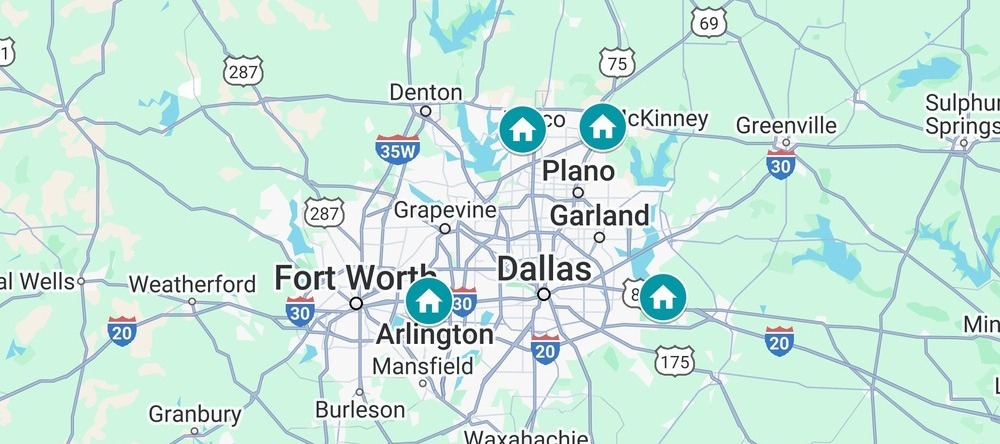
- BreakThrough by BasePoint – Arlington, Texas: 3900 Arlington Highlands Blvd, Suite 237B, Arlington, TX 76018, United States
- BreakThrough by BasePoint – Forney, Texas: 713 W Broad St, Suite 100, Forney, TX 75126, United States
- BreakThrough by BasePoint – McKinney, Texas: 4733 Medical Center Drive, McKinney, TX 75069, United States
- BreakThrough by BasePoint – Frisco, Texas: 8275 Judges Way, Suite 100F, Frisco, TX 75036
Arlington, Texas, blends cultural attractions with family fun and exciting sports. Home to the iconic AT&T Stadium, it’s a hub for major sporting events and concerts. The city also features the Arlington Museum of Art and lively entertainment districts. With plenty of parks and recreational venues, Arlington offers impressive experiences for residents and visitors alike.
- BreakThrough by BasePoint - Arlington, Texas: 3900 Arlington Highlands Blvd, Suite 237B, Arlington, TX 76018, United States
Forney, Texas, boasts charming vintage shops and a relaxed, family-friendly atmosphere. You’ll find the Spellman Museum of Forney History housed in a historic residence, showcasing artifacts and stories from the city’s early days. Outdoor enthusiasts can enjoy Forney Community Park’s green spaces and recreation options, while the Forney Transportation Museum features vintage locomotives honoring local rail heritage.
- BreakThrough by BasePoint – Forney, Texas: 713 W Broad St, Suite 100, Forney, TX 75126, United States
McKinney, Texas, offers a blend of historic charm, enriching culture, and scenic outdoor escapes just north of Dallas. Stroll through historic downtown McKinney, one of the region’s largest preserved districts, featuring over 120 independent shops, restaurants, and a free weekend trolley. Visit the Collin County History Museum in the old post office for more insights into local heritage.
- BreakThrough by BasePoint - McKinney, Texas: 4733 Medical Center Drive, McKinney, TX 75069, United States
Frisco, Texas, offers a diverse mix of cultural and recreational attractions. You can explore the National Videogame Museum, tour historic trains at the Museum of the American Railroad, and cheer on the Frisco RoughRiders at Riders Field. The city hosts professional soccer at Toyota Stadium and features parks like Kaleidoscope Park, home to public art and outdoor play areas.
- BreakThrough by BasePoint - 8275 Judges Way, Frisco, TX 75036 Suite 100F
Finding the right support for trichotillomania can feel overwhelming, especially when you’re unsure where to begin. With the right approach, you can uncover personalized options that match your needs and lifestyle. These are alternative ways to discover effective treatment for trichotillomania, empowering you to take the next step toward lasting relief and recovery.
Search Online: Begin your search online using your favorite search engine and inputting keywords like “trichotillomania treatment in Dallas, Texas,” or “How to stop trichotillomania in young adults.” Include towns and cities in your local area for results that provide specialized treatment for young adults.
Ask for Referrals from a Doctor or Therapist: Consult with your primary care physician or therapist for referrals to facilities that specialize in treating trichotillomania, a hair-pulling disorder.
Contact Local Mental Health Clinics: Local mental health clinics may also have a list of young adult mental health treatment facilities in your area that offer intensive outpatient programs or partial hospitalization programs, which provide trichotillomania therapies for young adults.
Check with Your Health Insurance Provider: Most health insurance providers have a list of in-network treatment facilities. BreakThrough by BasePoint is in-network with most major health insurance providers in Texas. We offer in-person care in the Dallas area and virtual therapy sessions throughout the state.
Call National Mental Health Helplines: National mental health help lines may also have a list of facilities in your local area or private therapists who specialize in treating obsessions and compulsions or trichotillomania and OCD.
Explore Online Therapy Options: Online counseling options offer the opportunity to receive comprehensive treatment at home, reducing barriers to transportation, providing flexible scheduling, and ensuring you receive care if you live in a mental health professional shortage area.
Discover More About BreakThrough by BasePoint Today
Young Adult Treatment Locations
Forney, TX
McKinney, TX (Virtual)
Frisco, TX
Call Us
Admission Hours
7:00 AM to 7:00 PM (CST)
7 Days a Week
How Much Do Hair Pulling Disorder Programs Cost with Health Insurance Coverage?
Health insurance in Dallas typically covers trichotillomania treatment as part of mental health services, though your out-of-pocket costs will vary. Outpatient therapy with insurance can range from $10 to $100 per session, with insurance coverage, depending on copays and if your therapist is an in-network provider. More intensive services can cost between $160 and $500 per day, with insurance coverage.
It’s important to recognize that these are only estimates. When you call BreakThrough by BasePoint at 972-325-2633, we can verify your insurance and estimate your costs. We are in-network with most major insurance plans. Our team provides transparent estimates of copays, session limits, and any allowable out-of-pocket expenses for services like IOP, PHP, or teletherapy. We’re dedicated to simplifying insurance navigation, so your focus remains on healing, letting us guide you toward recovery without unexpected financial expenses.
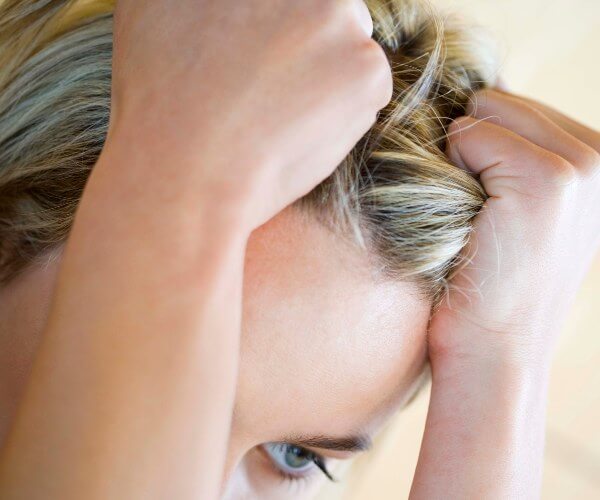
How Much Does Trichotillomania Treatment Cost Without Health Insurance Support?
Without health insurance in Dallas, young adult mental health treatment for trichotillomania typically costs from $100 $300 per outpatient therapy session. The range depends on several factors like the therapist’s education, session duration, and treatment intensity. More intensive programs are far more expensive. However, many providers offer sliding-scale fees or payment plans.
At BreakThrough by BasePoint, we understand financial concerns and work with you to find financial solutions when insurance isn’t available. Our goal is to improve your access to flexible and quality mental health treatment and ensure you have access to effective, personalized care without financial stress. Our priority is helping you make progress with confidence and support.
What Is the Admissions Process for Trichotillomania Programs at BreakThrough by BasePoint?
Seeking treatment for trichotillomania is an essential step toward emotional healing and behavioral change. At BreakThrough by BasePoint, we offer a supportive environment focused on understanding your needs and guiding your progress. The following offers an overview of the admission steps to our specialized care approach that helps you access the resources and support for trichotillomania treatment.
- Initial Contact: Your initial contact is typically over the phone, during which time our admission specialist can verify your insurance coverage and begin a streamlined admission process.
- Intake assessment: We offer a free initial intake assessment over the phone and can schedule it on the same day. This provides you with information about your condition and treatment recommendations that identify the level of care needed to adequately address your symptoms.
- Evaluation and diagnosis: If you decide to receive treatment at BreakThrough by BasePoint, you’ll undergo a thorough assessment and evaluation that includes evaluation of both physical and mental health conditions. This ensures we have the necessary information for an appropriate diagnosis and to provide a personalized treatment plan.
- Personalized treatment plan development: Using the information from your comprehensive evaluation, our multidisciplinary team creates a customized plan that includes your trichotillomania symptoms and factors that may impact your treatment options, such as the unique life stage challenges that young adults face.
- Insurance verification and financial counseling: Our admission specialist can verify your insurance coverage and connect you with our financial counselors if you are uninsured or underinsured. We are committed to providing the appropriate mental health treatment you need to help improve your quality of life.
- Admission to the program: Your admission to the program is well-coordinated with a personalized treatment plan and your insurance provider. You will receive an orientation to the facility or online platform, as well as your treatment plan, before beginning treatment.
- Ongoing monitoring and adjustments: Throughout your program, your therapist will continually monitor your progress and make adjustments to your treatment as needed, ensuring you continue to experience forward progress and improvements in symptom management.
- Trichotillomania is a form of Obsessive Compulsive Disorder (OCD) that was first described in ancient Greece and today is thought to be largely related to anxiety disorders. Twin studies also find that genetic anomalies are associated with this and other OCD conditions.
- In 2022, researchers demonstrated that trichotillomania impacts approximately 1% of the population, while general hair-pulling behaviors affect roughly 8%, which highlights the significant impact of this understudied condition.
- Trichotillomania affects more women than men. Although there are some gender differences, researchers proposed that gender-specific treatment was not justified as early as 1994. Mental health professionals today also believe that gender-specific compulsive hair-pulling treatment is not effective.
- Most commonly, trichotillomania begins between the ages of nine and 13, peaking between 12 and 13 years. Ritualistic behaviors may be preceded by stressful events like family conflict, abuse, or death.
- Although hair pulling begins in adolescence, it can continue through adulthood when left untreated. In a 2025 study, the median age of diagnosis of over 1,200 people with trichotillomania was 24.6 years. In most cases, the first diagnosis was in adolescence and early to mid-adulthood.

